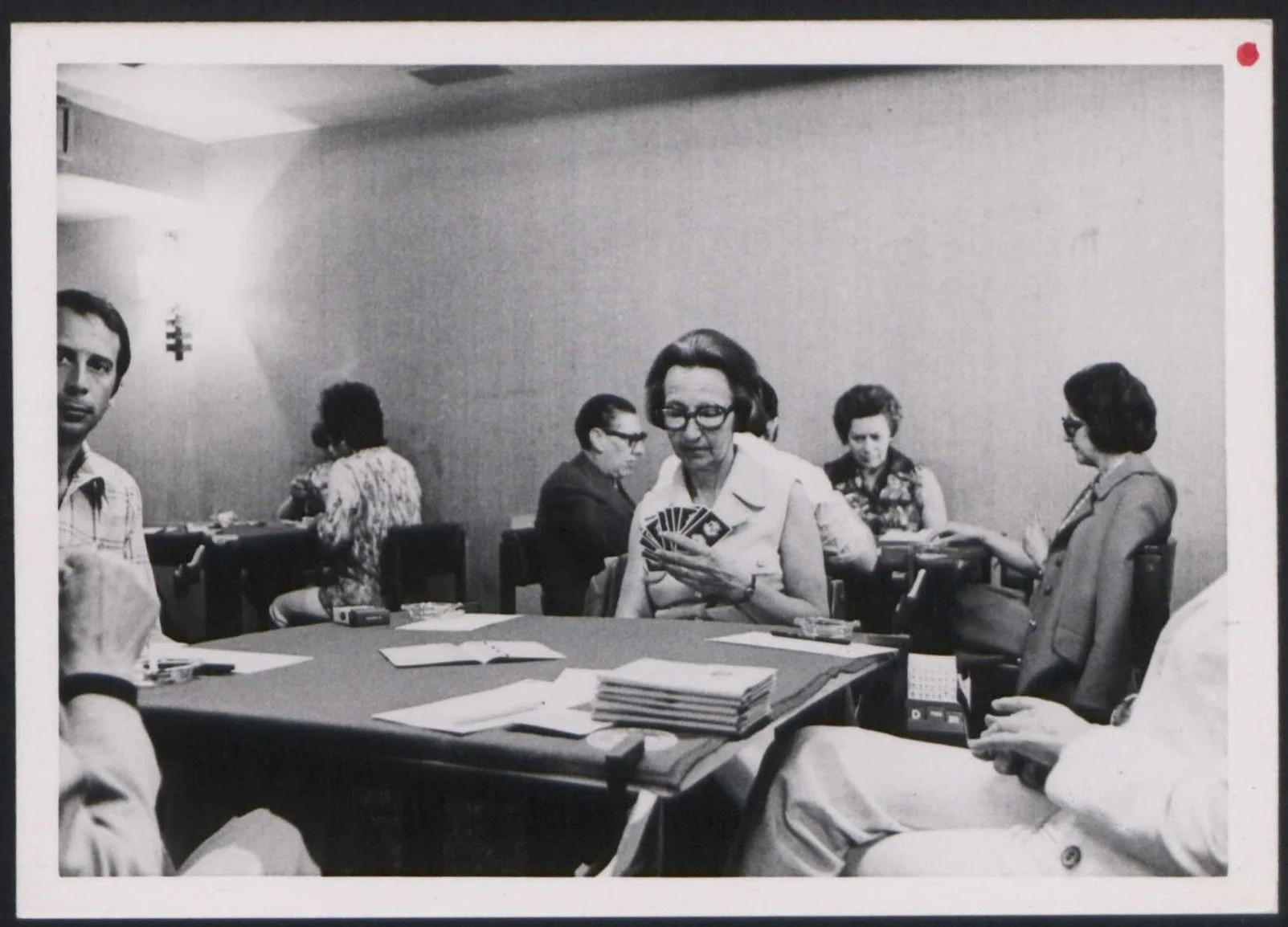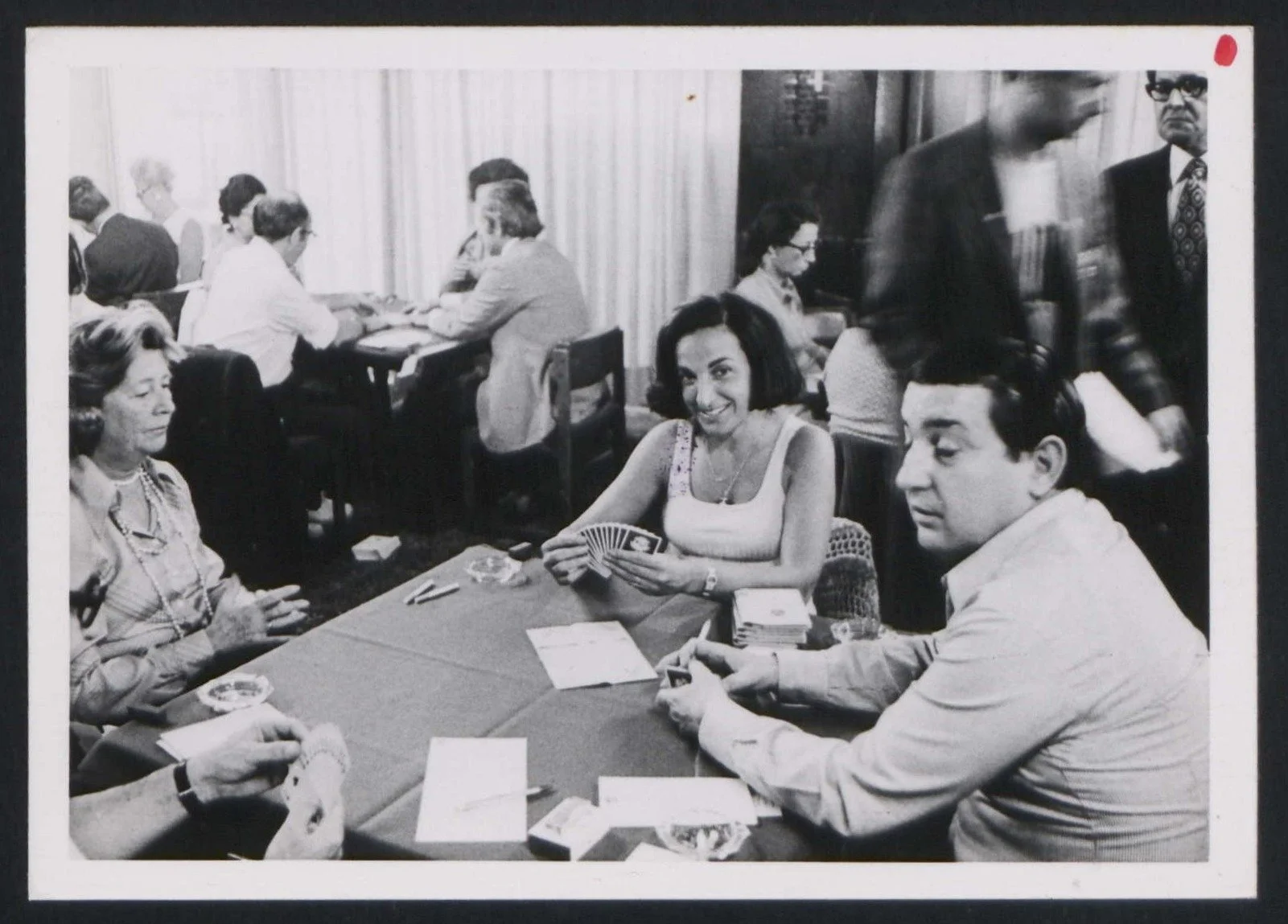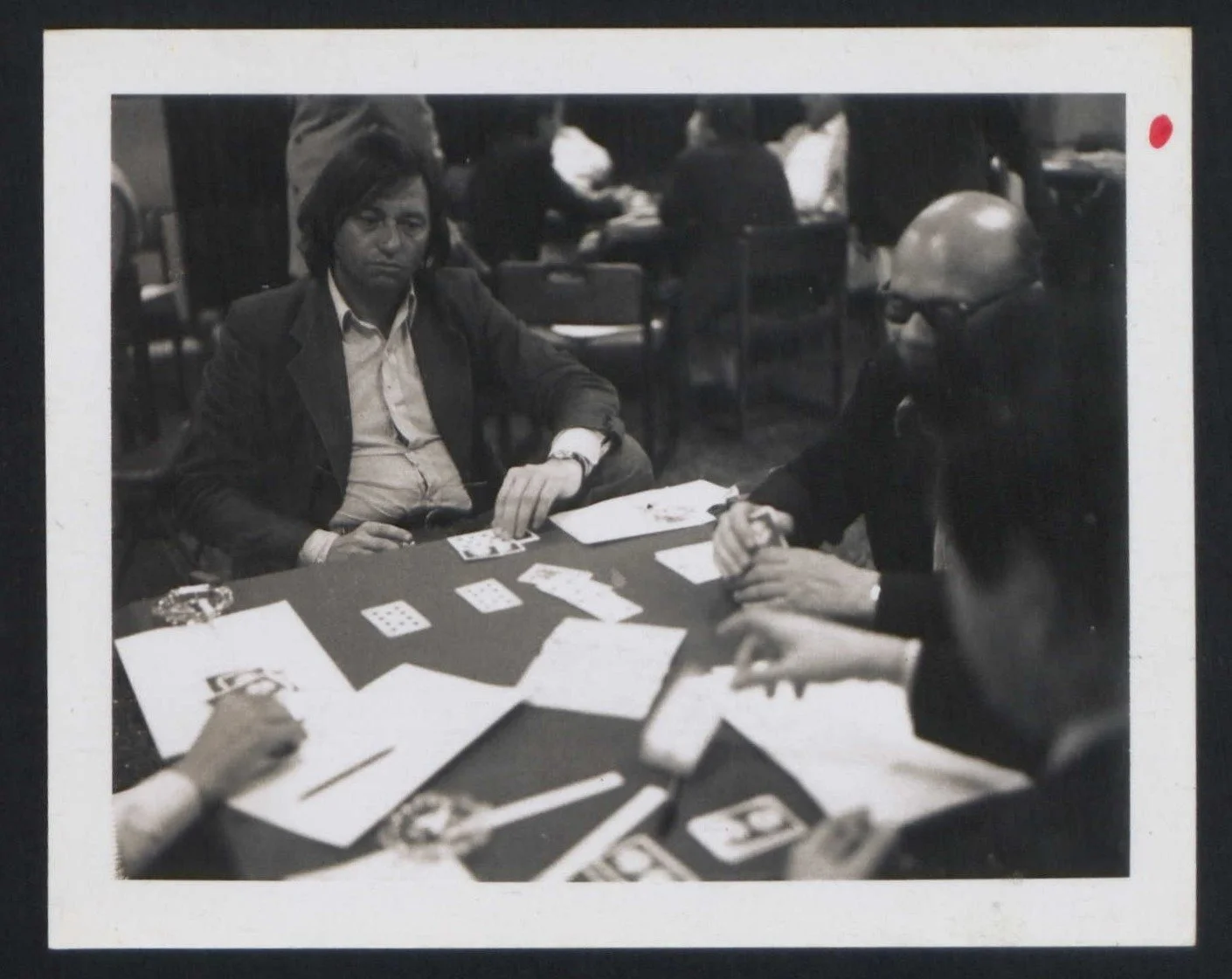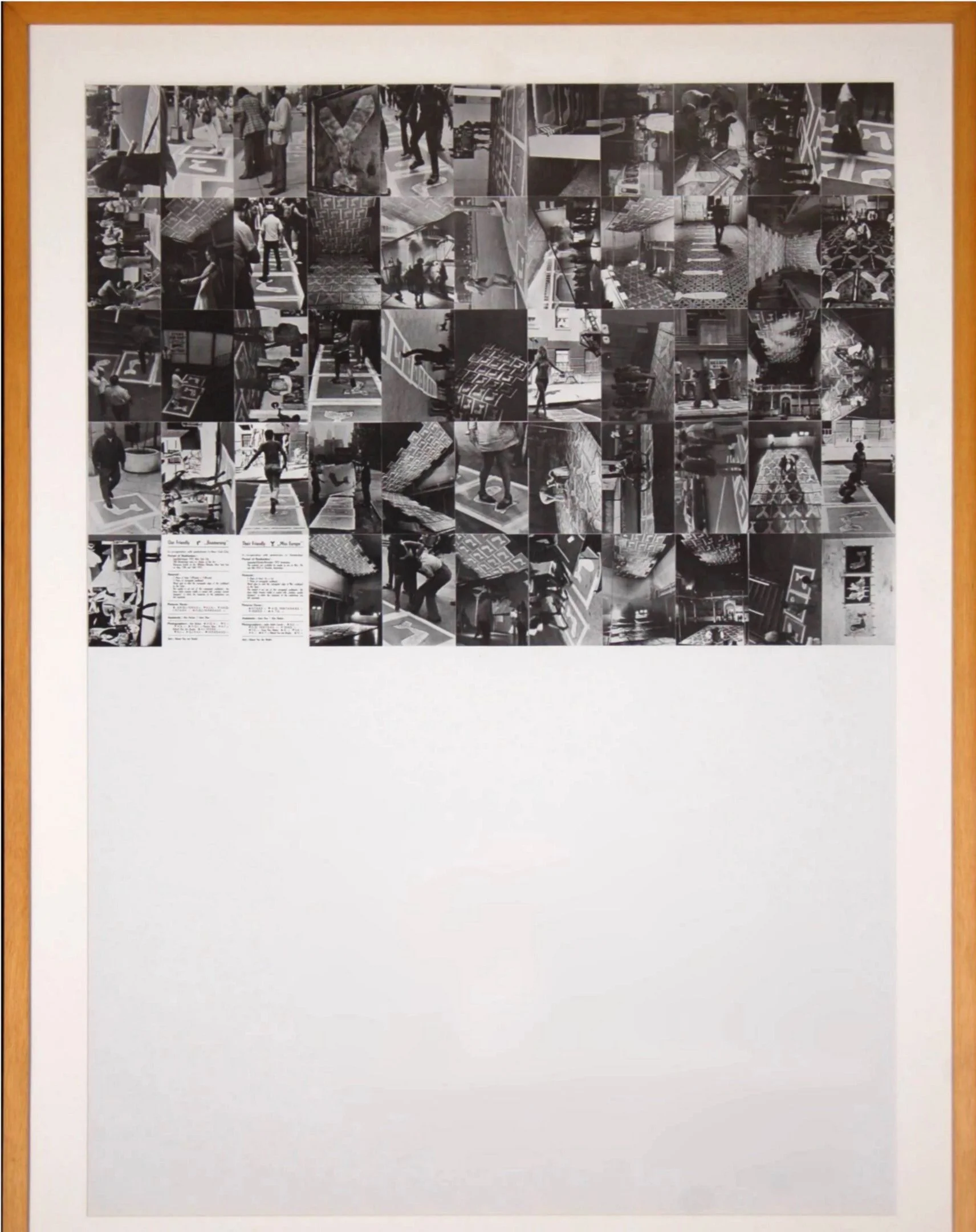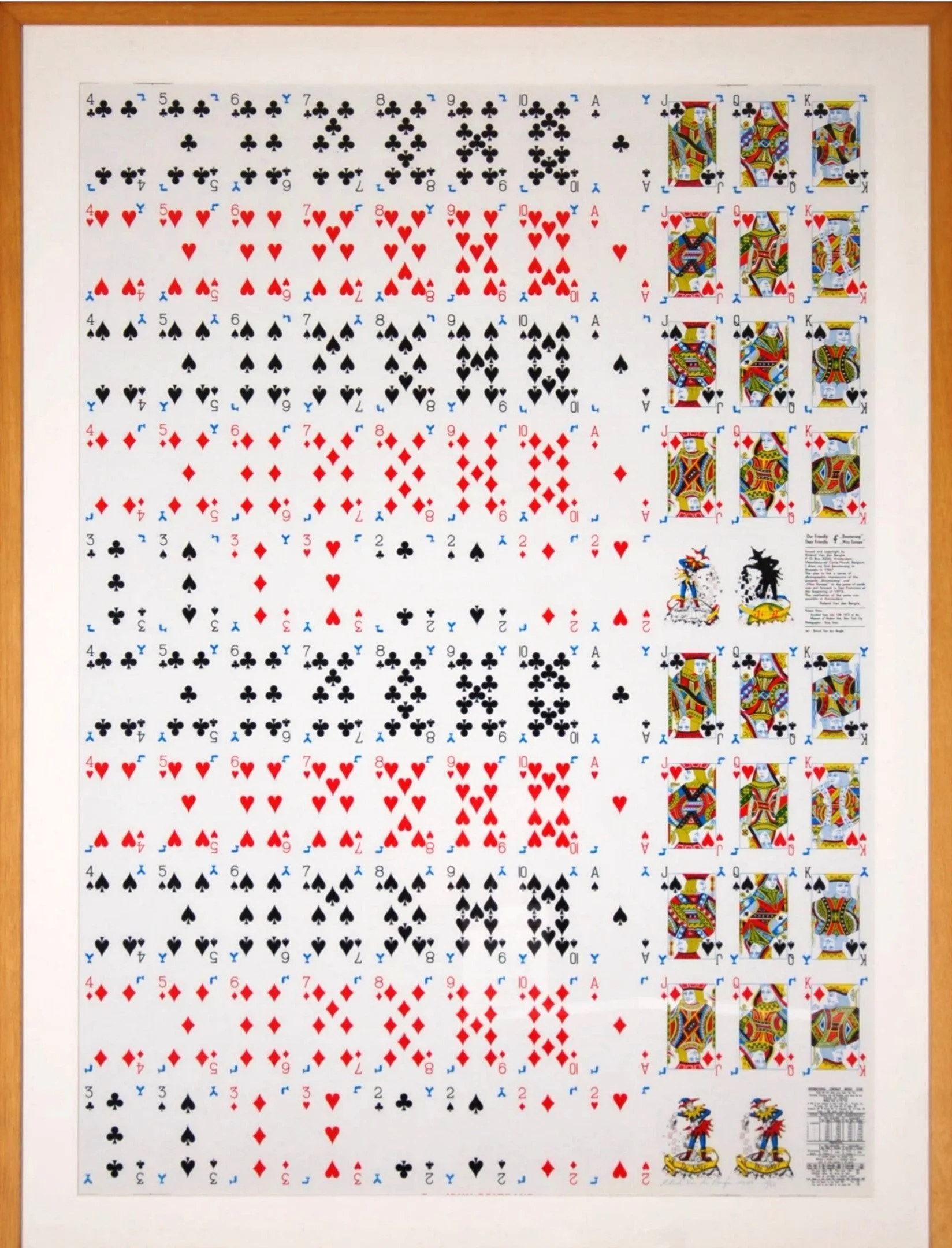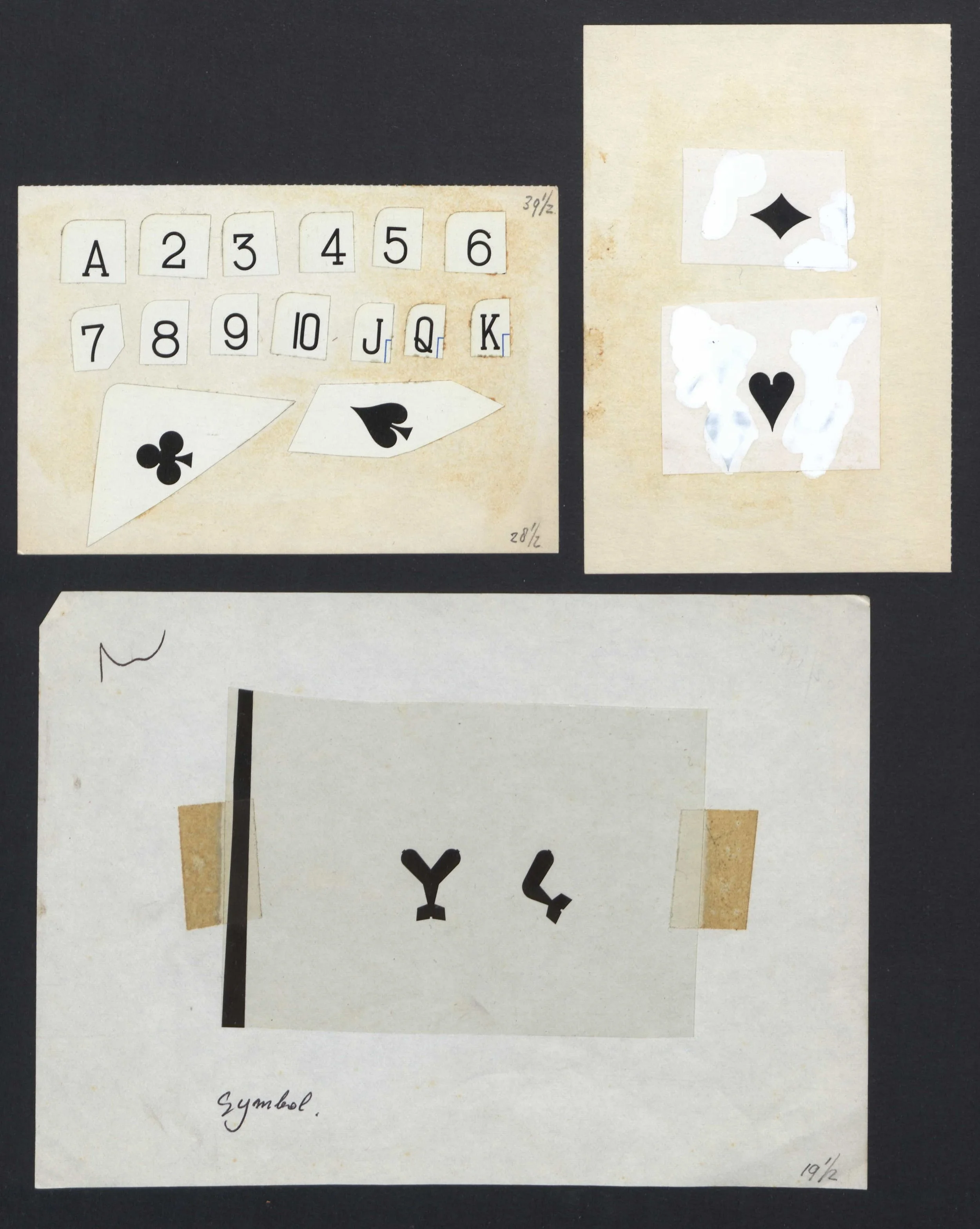Playing Cards Project
“Bridge and Bombs: the Card Game by Roland Van den Berghe”
From May 5 to 17, the World Bridge Olympiad will be held in Las Palmas (Tenerife), during which the world championships (pairs and national teams) will take place. Roland Van den Berghe, who cannot play bridge himself, is there with his card game: “A good opportunity to bring it into circulation. Where better to distribute playing cards than to the best card players in the world?”
Mr. Julius L. Rosenblum, president of the World Bridge Federation (New Orleans, U.S.A.), thought the same. And he agreed when Van den Berghe proposed to present his card game in Las Palmas. Because the back of this card game consists of photographs, he assumed Van den Berghe was a photographer. “Then you can make a photo report for us on site of the champions during the competition.” Did the president properly examine the backs of those cards? And did he really look at the fronts? Did he see that the whole deck swarms with bombs? Because, of course, this latest “work” by Roland Van den Berghe is once again highly subversive. In fact, it is merely a new phase in the series of bomb-related actions he has been pursuing since 1970.
Recall his “instrument to smoke bombs into the sky,” a metal stencil, produced in various sizes, which he wanted to mount on a truck to continuously drive through the park lanes for Sonsbeek Buiten de Perken (1971). Recall his action Our Friendly Boomerang in the summer of 1972 in New York, where he collected the footsteps of passersby, as they left their prints on images of bombs, which he had simply laid out in long rows on the street. Following this, in November '72 in Amsterdam, at Paradiso, came the action Their Friendly Miss Europe.
Photos of these two actions now appear on the back of the playing cards, which also feature small (blue) bombs on the recto side. And the joker deserves a separate analysis. At first glance, nothing seems odd about it, but those who look closely will soon spot a number of unusual attributes and symbols open to various interpretations.
Jokers from Our Friendly ‘Boomerang’ – Their Friendly ‘Miss Europe', 1974.
Collage in preparation of the card set, Our Friendly ‘Boomerang’ – Their Friendly ‘Miss Europe'.
The first print run (5000) was beautifully printed by Carta Mundi, in Turnhout. Two hundred uncut sheets—showing the entire card game on the recto and all the photos on the verso in one view—are being sold, numbered and signed. They’re selling like hotcakes. Collectors find them original and aesthetic. Van den Berghe is well aware that with this, he immediately steps into the commercial-artistic circuit, which he hates and resists. “But I had to find a manageable form to communicate more fluidly. Until now, I mostly made things, did things that were unsellable or unique. Which therefore reached very few people. But what is more practical than a deck of cards, more playful? And so I’ve now concentrated a number of ideas and feelings into it that I want to share, which previously I could only express individually.”
With his earlier, more plastic actions involving mock bombs (bent back into boomerangs returning to the sender), Van den Berghe already drew attention in a playful and critical way to the horror of using real bombs. By channeling his bomb obsession into a card game (this symbol of all competition, as he says), new meanings emerge. While playing, one tries to win, to make the others lose. To that end, one hides as much information as possible from the opponents, while passing on all possible information to one's partners. Information means power. Power means aggression. The element of aggression is built into every (card) game. Even without the addition of bombs or boomerangs. Those merely underscore a reality.
In ever-changing forms, with inexhaustible inventiveness, Van den Berghe gives voice to his protest against violence, hysteria, manipulation. Just as he remains, despite everything, the marginal freak in his private life, refusing to fit into any system, he manages to express himself in a personal code that escapes conventional artistic clichés. Of course, he doesn’t supply a key to that personal code. One must find it oneself, in doing, in interpreting the work itself. As with any other artist, he calls on a creative approach. The originality of his method and the unexpected nature of his imagery don’t always make this easy, but they precisely reflect his personal world of thought, infused with a kindly malicious reflection on societal and political situations.
Whether, in the meantime, this card game is suitable for normal use, for an actual game? Probably not, since the backs of the cards quickly become recognizable due to the different photographs. But that doesn’t matter to Van den Berghe. The card game is released in duplicate: two complete decks in a plastic box. With the intention of challenging the public to do something else with it, to add something, or to use it creatively in one way or another. Two weekly magazines have considered sending the card game to their most loyal subscribers as a bonus, and then—using the 52 best responses—perhaps compile a third card game. Meanwhile, Roland and his friends in Las Palmas are making a video report on the presence of their bomb card game at the bridge tournament: the result will then be a new work.”
Translated from the Dutch text: 1974, Bridge en Bommen: Het Kaartspel van Roland Van den Berghe by Callewaert, Marc. Gazet van Antwerpen, 08 May 1974, p.7.
Collage in preparation of the card set, Our Friendly ‘Boomerang’ – Their Friendly ‘Miss Europe'.
Playing cards Our Friendly ‘Boomerang’ – Their Friendly ‘Miss Europe', 1974.
Timeline
1973
Publication of the playing card set, inspired by Our Friendly Boomerang and Their Friendly Miss Europe, New York, Amsterdam.
1974
A new technique for your personal Playing-Cards, World Bridge Olympiad, Hotel Cristina, Hotel Reina Isabel, Hotel Santa Catalina, Hotel Maspalomas Oasis, Las Palmas de Gran Canaria, Las Palmas, World Bridge Olympiad.
1979
Playing cards used by travel companions in Vietnam. The journey took place from December 1979 to January 1980.
1981
Publication of interviews and colored playing cards of travel companions in In Te Elfder Uren: Viet Nam/Kultuur/Biopolitiek, year 26 no. 1.
Page from sketchbook, reference to publication Viet Nam revisited; Holland Hàlan in Te Elfder Uren: Viet Nam/Kultuur/Biopolitiek, 1981.



